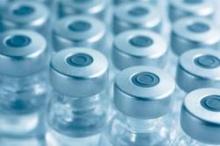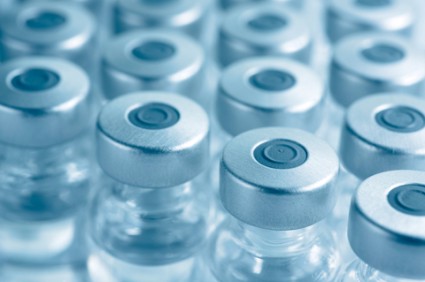User login
Two doses of a human papillomavirus vaccine significantly reduced the risk of developing genital warts in a large cohort of girls and women in Sweden; subjects who had received the full scheduled three doses saw an even lower risk.
The research, published online Feb. 11 in JAMA, did not look at risk reduction for cervical cancer – the main goal of human papillomavirus (HPV) vaccination programs – but instead looked at the earliest HPV-related disease outcome that can be measured (JAMA 2014 Feb. 11 [doi:10.1001/jama.2014.95]).
In the study, Eva Herweijer of Karolinska Institutet, Stockholm, and her colleagues examined Swedish population-based health registries for data on HPV vaccination and first appearance of condyloma, (warts), in a cohort of 1,045,165 girls and women between the ages of 10 and 24 years who were followed up between 2006 and 2010. The treatment used in Sweden’s program was a quadrivalent vaccine that covered HPV 16 and 18, the types linked with cervical cancer, and also HPV 6 and 11, which are associated with condyloma.
Girls aged 10-16 at the time of vaccination who received the full three doses saw the lowest incidence rate ratio of 0.18 (95% CI, 0.15-0.22), while girls in the same age group receiving two doses saw an IRR of 0.29 (95% CI, 0.21-0.40). The number of cases prevented by three doses compared with two doses was 59 cases per 100,000 person-years, "which is a small difference," Ms. Herweijer and her colleagues wrote in their analysis. They noted that the three-dose schedule is associated with cost and feasibility concerns. Of the subjects in the cohort who were vaccinated, less than a third received the full three doses.
"Previous national studies," the investigators wrote, "have examined the effect of HPV vaccination; however, none to date have examined associations by vaccine dose level, which is important because actual vaccination programs include substantial numbers of women who do not complete the full vaccination schedule." They stressed that studies with longer follow-up would be needed to assess whether a dose-related reduction could be seen for other disease outcomes, importantly neoplasia and cancer.
Ms. Herweijer and her colleagues’ study was funded by the Swedish Foundation for Strategic Research. Four of her coauthors, Dr. Joakim Dillner, Eva Netterlid, Ph.D., Pa¨r Sparén, and Lisen Arnheim-Dahlstro¨m, Ph.D., reported having received previous financial support from Merck, Sanofi Pasteur, and GlaxoSmithKline.
Two doses of a human papillomavirus vaccine significantly reduced the risk of developing genital warts in a large cohort of girls and women in Sweden; subjects who had received the full scheduled three doses saw an even lower risk.
The research, published online Feb. 11 in JAMA, did not look at risk reduction for cervical cancer – the main goal of human papillomavirus (HPV) vaccination programs – but instead looked at the earliest HPV-related disease outcome that can be measured (JAMA 2014 Feb. 11 [doi:10.1001/jama.2014.95]).
In the study, Eva Herweijer of Karolinska Institutet, Stockholm, and her colleagues examined Swedish population-based health registries for data on HPV vaccination and first appearance of condyloma, (warts), in a cohort of 1,045,165 girls and women between the ages of 10 and 24 years who were followed up between 2006 and 2010. The treatment used in Sweden’s program was a quadrivalent vaccine that covered HPV 16 and 18, the types linked with cervical cancer, and also HPV 6 and 11, which are associated with condyloma.
Girls aged 10-16 at the time of vaccination who received the full three doses saw the lowest incidence rate ratio of 0.18 (95% CI, 0.15-0.22), while girls in the same age group receiving two doses saw an IRR of 0.29 (95% CI, 0.21-0.40). The number of cases prevented by three doses compared with two doses was 59 cases per 100,000 person-years, "which is a small difference," Ms. Herweijer and her colleagues wrote in their analysis. They noted that the three-dose schedule is associated with cost and feasibility concerns. Of the subjects in the cohort who were vaccinated, less than a third received the full three doses.
"Previous national studies," the investigators wrote, "have examined the effect of HPV vaccination; however, none to date have examined associations by vaccine dose level, which is important because actual vaccination programs include substantial numbers of women who do not complete the full vaccination schedule." They stressed that studies with longer follow-up would be needed to assess whether a dose-related reduction could be seen for other disease outcomes, importantly neoplasia and cancer.
Ms. Herweijer and her colleagues’ study was funded by the Swedish Foundation for Strategic Research. Four of her coauthors, Dr. Joakim Dillner, Eva Netterlid, Ph.D., Pa¨r Sparén, and Lisen Arnheim-Dahlstro¨m, Ph.D., reported having received previous financial support from Merck, Sanofi Pasteur, and GlaxoSmithKline.
Two doses of a human papillomavirus vaccine significantly reduced the risk of developing genital warts in a large cohort of girls and women in Sweden; subjects who had received the full scheduled three doses saw an even lower risk.
The research, published online Feb. 11 in JAMA, did not look at risk reduction for cervical cancer – the main goal of human papillomavirus (HPV) vaccination programs – but instead looked at the earliest HPV-related disease outcome that can be measured (JAMA 2014 Feb. 11 [doi:10.1001/jama.2014.95]).
In the study, Eva Herweijer of Karolinska Institutet, Stockholm, and her colleagues examined Swedish population-based health registries for data on HPV vaccination and first appearance of condyloma, (warts), in a cohort of 1,045,165 girls and women between the ages of 10 and 24 years who were followed up between 2006 and 2010. The treatment used in Sweden’s program was a quadrivalent vaccine that covered HPV 16 and 18, the types linked with cervical cancer, and also HPV 6 and 11, which are associated with condyloma.
Girls aged 10-16 at the time of vaccination who received the full three doses saw the lowest incidence rate ratio of 0.18 (95% CI, 0.15-0.22), while girls in the same age group receiving two doses saw an IRR of 0.29 (95% CI, 0.21-0.40). The number of cases prevented by three doses compared with two doses was 59 cases per 100,000 person-years, "which is a small difference," Ms. Herweijer and her colleagues wrote in their analysis. They noted that the three-dose schedule is associated with cost and feasibility concerns. Of the subjects in the cohort who were vaccinated, less than a third received the full three doses.
"Previous national studies," the investigators wrote, "have examined the effect of HPV vaccination; however, none to date have examined associations by vaccine dose level, which is important because actual vaccination programs include substantial numbers of women who do not complete the full vaccination schedule." They stressed that studies with longer follow-up would be needed to assess whether a dose-related reduction could be seen for other disease outcomes, importantly neoplasia and cancer.
Ms. Herweijer and her colleagues’ study was funded by the Swedish Foundation for Strategic Research. Four of her coauthors, Dr. Joakim Dillner, Eva Netterlid, Ph.D., Pa¨r Sparén, and Lisen Arnheim-Dahlstro¨m, Ph.D., reported having received previous financial support from Merck, Sanofi Pasteur, and GlaxoSmithKline.
FROM JAMA

